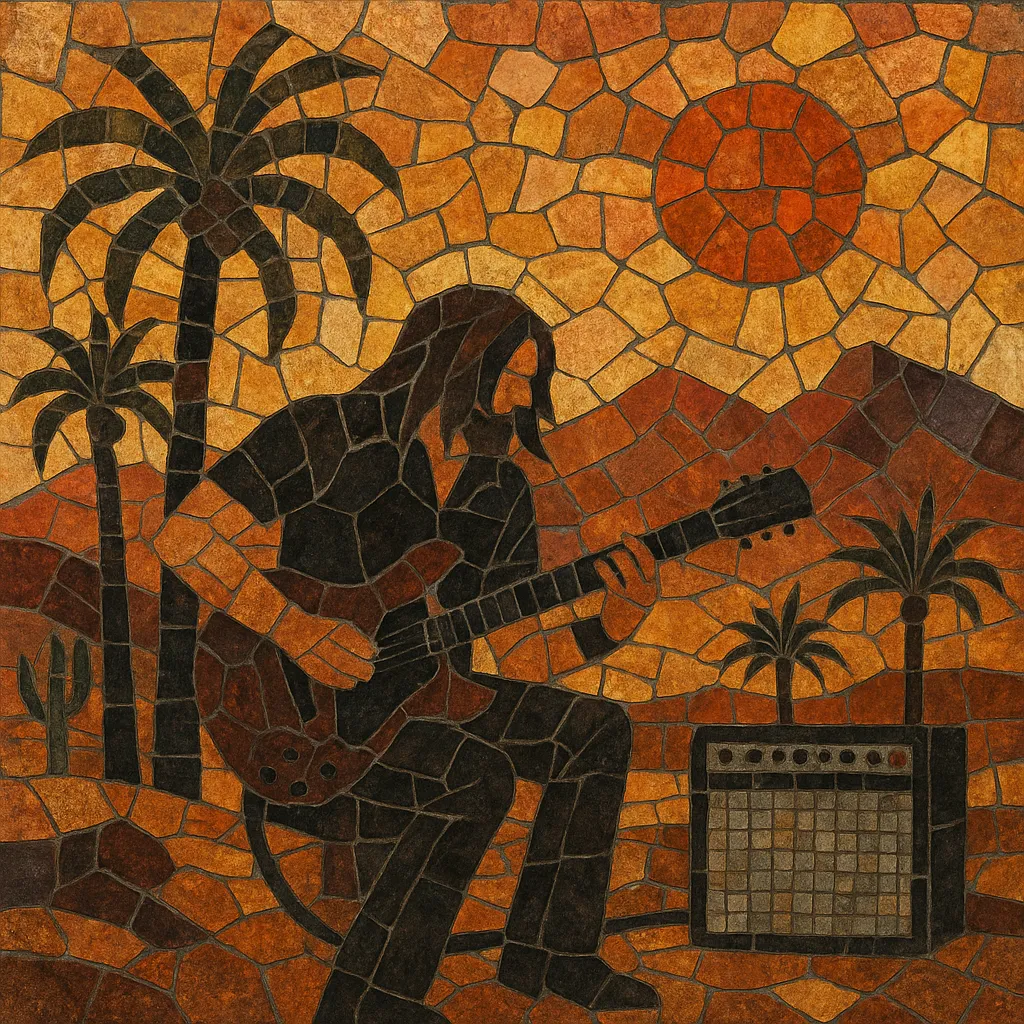The Palm Desert Scene refers to a loose collective of bands from California’s Coachella Valley and surrounding high desert communities that forged a distinct heavy, groove-forward rock sound.
Defined by downtuned, heavily fuzzed guitars, hypnotic mid‑tempo grooves, and jam-oriented arrangements, it blends hard rock, psychedelic rock, blues rock, and punk attitude with a widescreen "desert" atmosphere. Generator-powered outdoor parties, a DIY ethos, and improvisation were central, producing music that feels both earthy and expansive—at once monolithic, trancelike, and sun-baked.
The scene prioritized groove and vibe over technical flash: thick bass, swinging drums, repetitive riff ostinatos, and minimal, dry production often tracked live. Surf-reverb textures and occasional modal, Middle Eastern-tinged inflections further color its distinct desert character.
The Palm Desert Scene coalesced in Southern California’s Coachella Valley, where musicians held infamous generator-powered desert parties. Figures like Mario Lalli helped organize these gatherings, cultivating a DIY space for loud, extended jams far from clubs and industry gatekeepers. Yawning Man’s atmospheric, surf-inflected instrumentals set an early blueprint: hypnotic repetition, desertwide reverb, and unhurried, exploratory structures.
Kyuss crystallized the sound: low tunings, colossal fuzz, and groove-driven riffing that felt simultaneously heavy and psychedelic. Albums like “Blues for the Red Sun” (1992) and “Welcome to Sky Valley” (1994) became touchstones. Producer/mentor Chris Goss (Masters of Reality) and the Rancho de la Luna studio networked the community, while bands such as Fatso Jetson and Fu Manchu (SoCal kin to the desert) broadened the scene’s reach.
After Kyuss split, Josh Homme formed Queens of the Stone Age, streamlining the desert heft into precision grooves and unconventional song forms. Homme’s Desert Sessions—rotating collaborations recorded at Rancho de la Luna—captured the scene’s communal, exploratory spirit. Parallel projects (Brant Bjork’s various bands, Mondo Generator, Unida, Hermano) kept the low desert pulse alive as the sound influenced a worldwide stoner/"desert" rock wave.
The Palm Desert Scene catalyzed a modern heavy-psych revival and provided the aesthetic and mythos for desert/stoner rock globally: generator parties, live-first recording, riffs as mantras, and a sense of space shaped by heat, horizon, and isolation. Its DNA continues in contemporary heavy psych, stoner metal, and space-rock-adjacent acts around the world.


